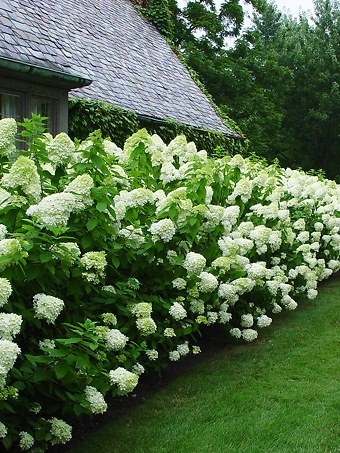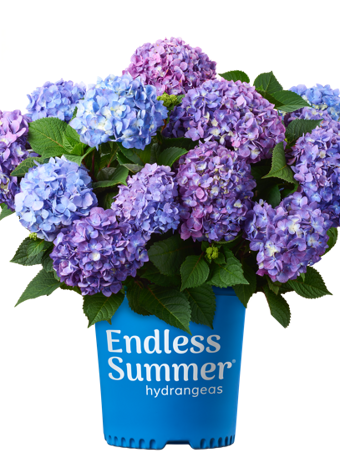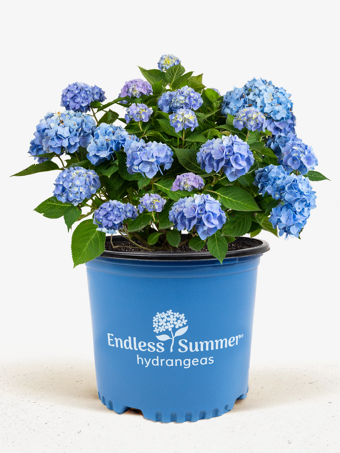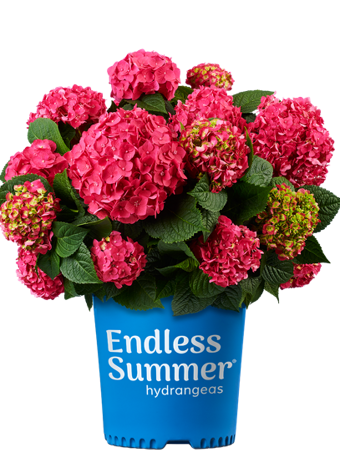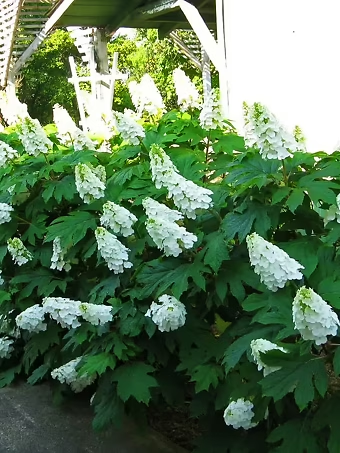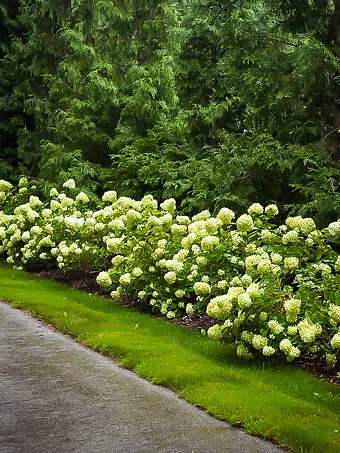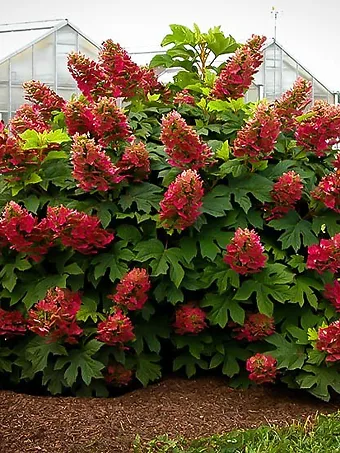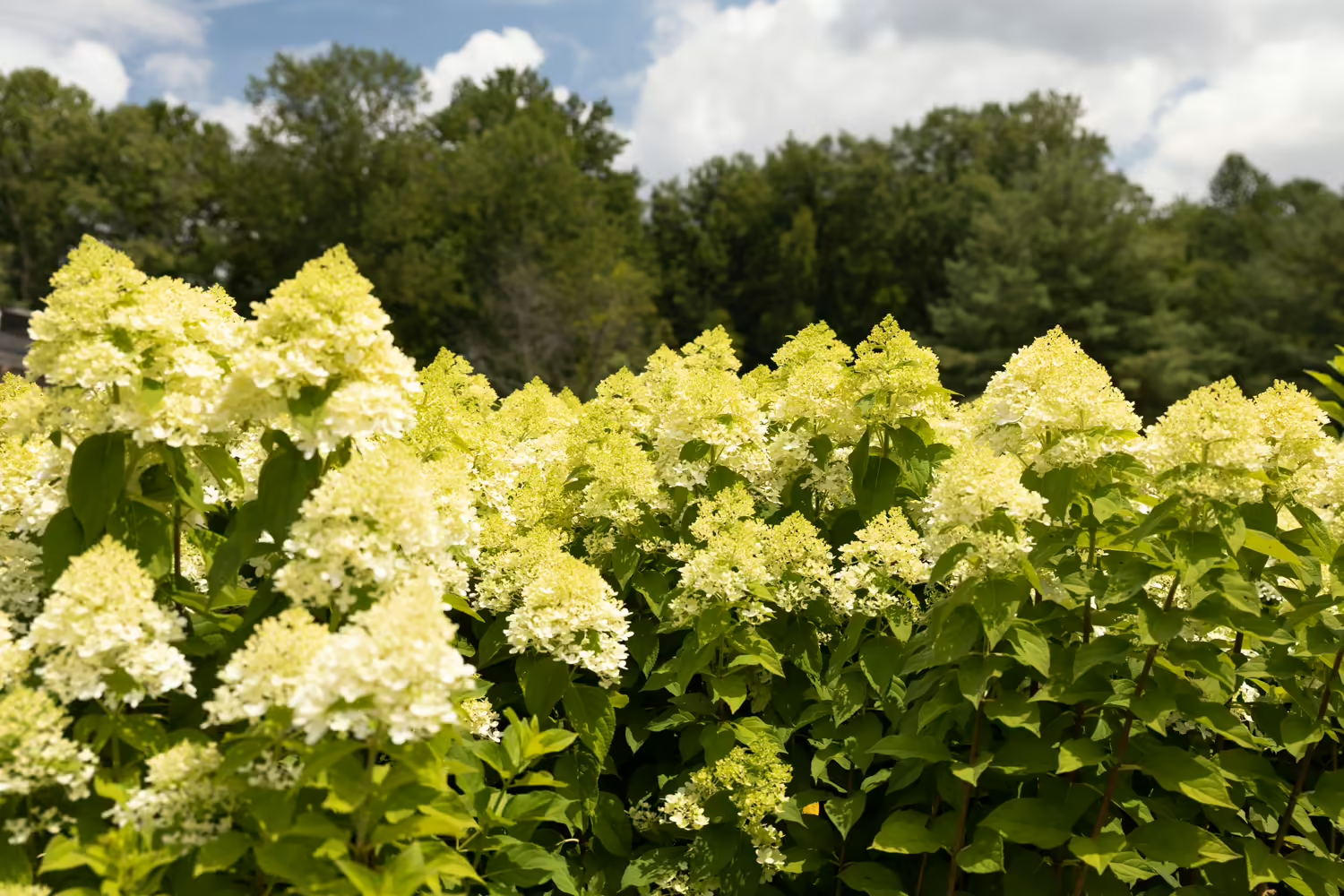
Written by s • Beyond the Mop-Head Hydrangea – Other Types and Species of Hydrangea Plants
Say “Hydrangea”, and most people think of those big, floppy heads of flowers in summer, in pink, white, or blue. That is the big-leaf hydrangea, Hydrangea macrophylla, that came to us from Japan. There is much more, though, to this group of about 70 species, and many of them are great garden plants that should be seen much more often in our gardens. Most of those species come from China, Japan and the Far East, but the USA can proudly claim two great species, and others are found down through South America and in the Andes mountains.
What makes a hydrangea a Hydrangea?
What makes a hydrangea a Hydrangea is the unusual way the flowering is organized. There is nothing unusual for a plant about having your flowers arranged in clusters – usually for hydrangeas as flattened heads (corymbs or umbels) or tall pyramids (panicles) – but beyond that, in Hydrangea there is an interesting economy being practiced. Rather than expending lots of energy creating big flowers to attract pollinating insects, the flowers are of two kinds. The attracting bit is done by a few relatively large flowers which are sterile (they don’t make seeds). The seeds themselves come from many tiny flowers, usually without much or anything in the way of petals, called fertile flowers. Once insects are in range, spotting the sterile flowers, they wander around on the fertile ones, doing the job they do, and allowing the plant to produce its seeds. Those big mop-head flowers are mostly sterile – a valuable garden mutation that doesn’t help the plant much – but mixed among them, if you poke around, there are usually fertile ones as well.
American Hydrangeas
Let’s take a look at our own native species. There is a lot of interest in growing native plants in our gardens these days – a move away from all the ‘exotic’ plants that remain the center of the nursery industry. There are just a few species found wild in America – remnants of the time when Asia and America were linked by a land-bridge. Let’s take a closer look at them.
The Oakleaf Hydrangea
My personal favorite of the American hydrangeas, if you live in warmer zones you really should be growing this plant in your garden. Its name, Hydrangea quercifolia, tells most of it, because this plant really does have very beautiful foliage, big, bold and striking. Even without the blooms it would be a worthwhile foliage shrub. The leaves are up to a foot long and wide – at their biggest in shade – and they are divided into 5 or 7 lobes, looking like some giant leaf of an oak tree (Quercus to a botanist). The young shoots and emerging leaves are covered in a light tan felt, adding to the beauty, and in fall the leaves turn shades of deep reds and purples, often lasting on the plant through most of the winter months. Oh, let’s not forget the flowers, of course. Wild plants have a lot of small, sterile flowers in the tapering pyramidal heads, but garden varieties have many big sterile flowers, so they are like giant cones of creamy white blossoms, often a foot or more in length. Since this plant can grow to be 10 feet tall and wide, if unpruned, a plant in full bloom is a spectacular sight.
One of the best is the variety ‘Alice’, introduced by the well-known Professor Michael Dirr, of the University of Georgia, from a plant growing on the campus. If that is too big for you, look out for a couple of alternative. SNOW QUEEN™, (‘Flemygea’) only reaches about 6 feet, perfect for smaller gardens, with an attractive compact form and very white flowers in dense trusses. Even smaller is ‘Munchkin’, a compact variety under 5 feet, with smaller but abundant blooms that turn attractive pinks and reds in fall. An oak-leaf for every garden, for sure.
These plants are borderline in zone 5, needing a sheltered spot, and the further south you go the better they grow. Naturally found from North Carolina to Louisiana, these plants are also more sun and drought tolerant than mop-heads, so they’re perfect if you don’t have the cool, damp garden preferred by them.
The Smooth Hydrangea
Wild plants of this species, Hydrangea arborescens, can be found anywhere from New Jersey to Florida and Kansas, but it’s most abundant in the Appalachians and the Delaware River valley. Always found in moist woodlands, sometimes it is split into two species, the other being the similar Hydrangea radiata. The flowers of the wild smooth hydrangea are almost all small, fertile and greenish – not much of a show for the garden. But the different varieties grown have big round balls of sterile flowers, usually white, but newer varieties have brought us pink as well.
Best known is the old variety ‘Annabelle’, that has been around for over a hundred years since it’s chance discovery. This is the most cold-hardy of all the hydrangeas, growing well in zone 4. It differs from others by flowering on new stems, not old ones, so even when killed to the ground it bounces right back, flowering profusely by mid-summer and through the fall. It’s only fault is floppy stems, so it is worth looking out for the INCREDIBALL® Hydrangea (‘Abetwo’) which is virtually identical, but stands up on strong, sturdy stems. This garden classic is fabulous mass planted in partial shade, where it looks like a display of cool summer ice cream – just looking at it makes you feel cooler.
If you want the best pink hydrangea for cold areas, look no further than the PINKERELLA Hydrangea, (‘Kolpinbel’), or consider one of the University of North Carolina plants in the INVINCIBELLE® range, like Blush, Wee White, Ruby or Limetta. These open up a whole range of hydrangea colors and forms for cold-region gardeners – a big change that many are still catching up on.
The Gray Hydrangea
For completion we mention the gray hydrangea (Hydrangea cinerea), which is recognized by the gray-white fuzzy undersides of the leaves. It is very similar to the smooth hydrangea, but found further west, on alkaline soils. At this time there are few garden varieties, but it could be a plant ripe for development.
Climbing Hydrangeas
Let’s skip across the Pacific for something very different in hydrangeas. It comes as a surprise to many to see the climbing hydrangea, Hydrangea petiolaris, also called Hydrangea anomala subsp. petiolaris. We expect a bush, but here we have a plant with long stems that send out roots and cling to any stable surface.
Coming from Japan and northern China, it is often grown against a north-facing wall, or in full shade, where it will certainly grow, and even flower. But plant it with some sun for part of the day, in rich soil, and stand back for a vigorous plant smothered in blooms through the second half of summer, with handsome foliage and finger-thick clinging stems with shedding dark-orange bark. The flat flower heads are a mix of fertile and sterile flowers, so they resemble white lace-cap hydrangea varieties.
Capable of covering an area about 40 feet across and high, it will climb up into an old tree too (its natural habitat), so give it plenty of room, and don’t be fooled by the slow growth in the first couple of years. Once established this is a spectacular plant that needs room and strong supports – but it’s worth the effort to have a good specimen of this beauty – just feast your eyes on the picture at the top of this blog.

